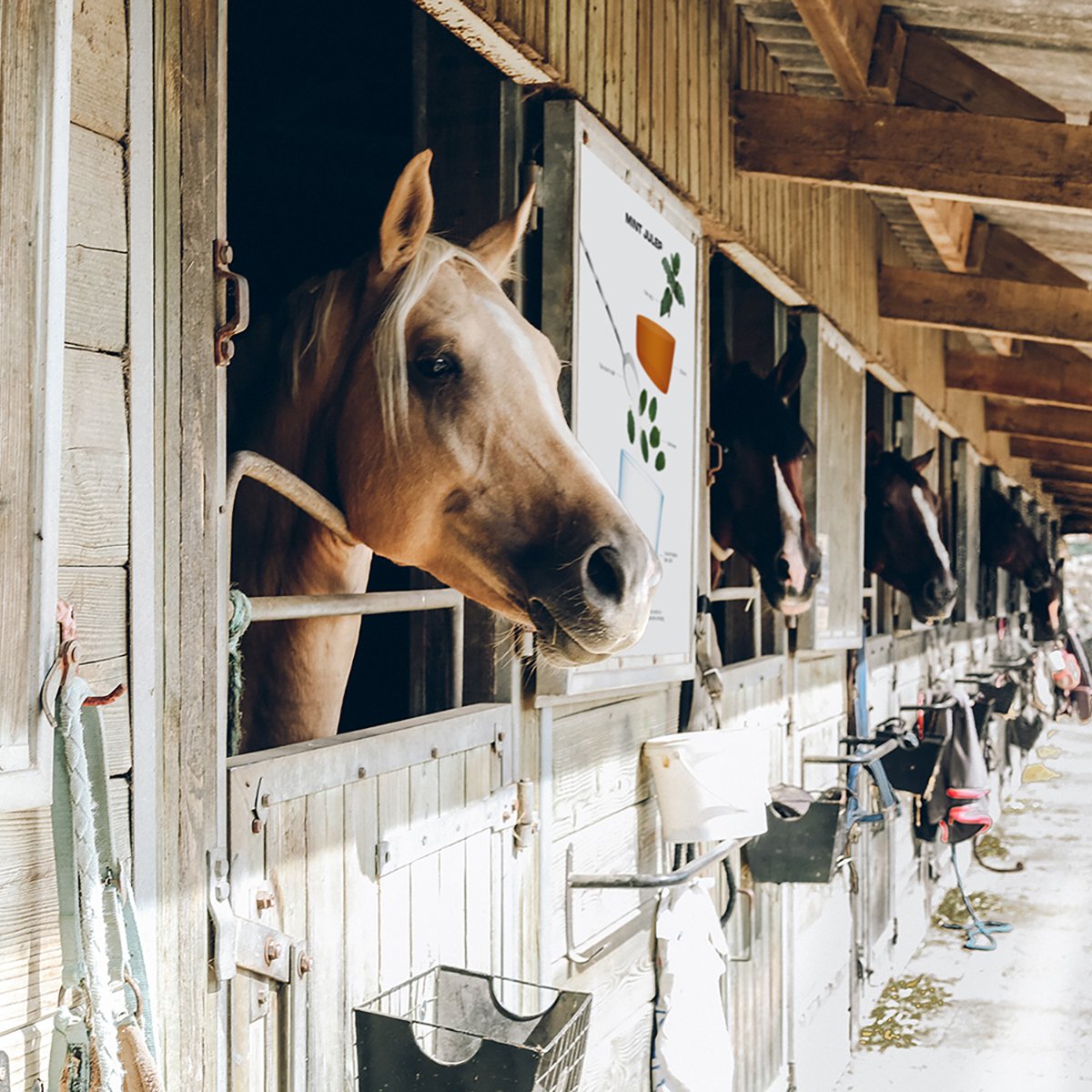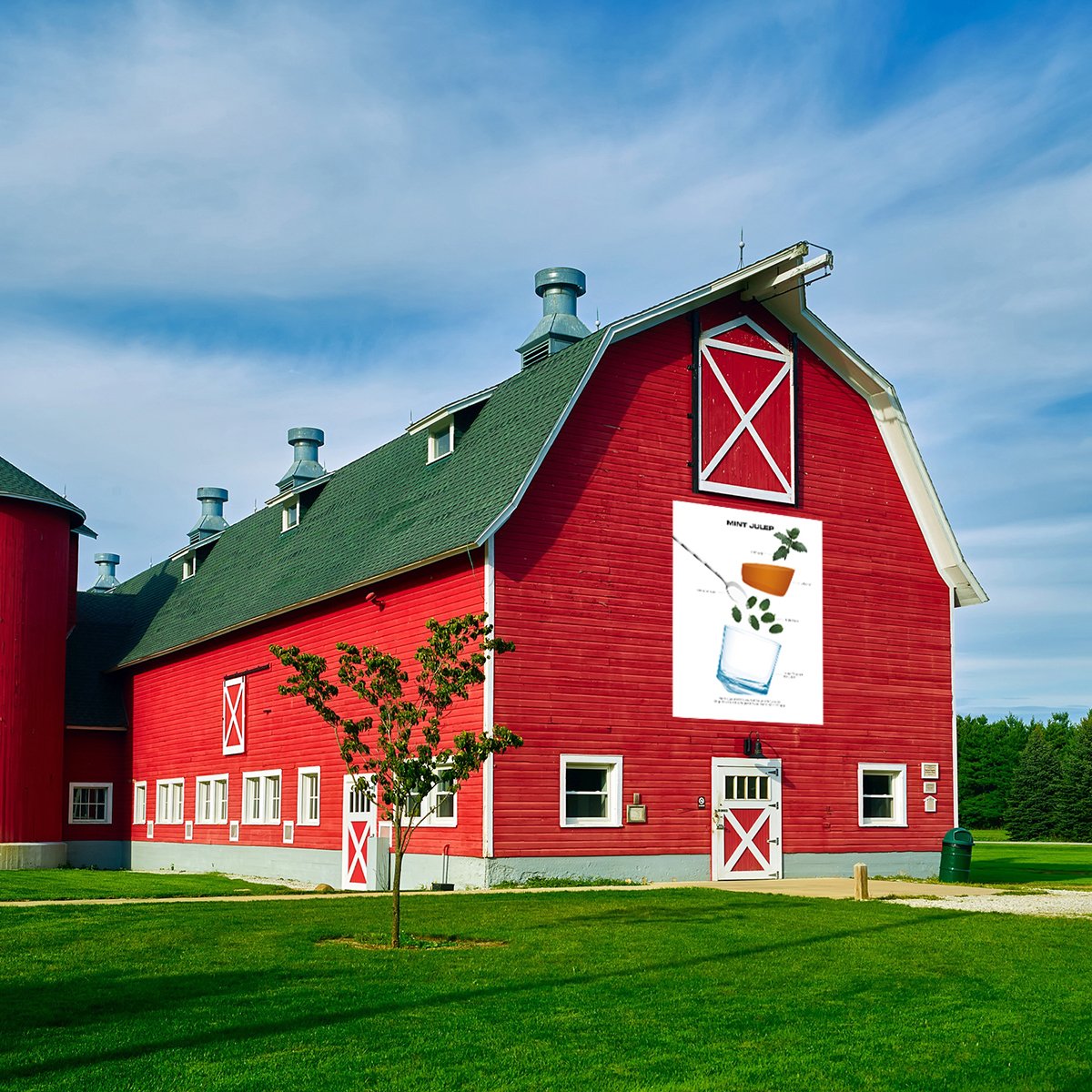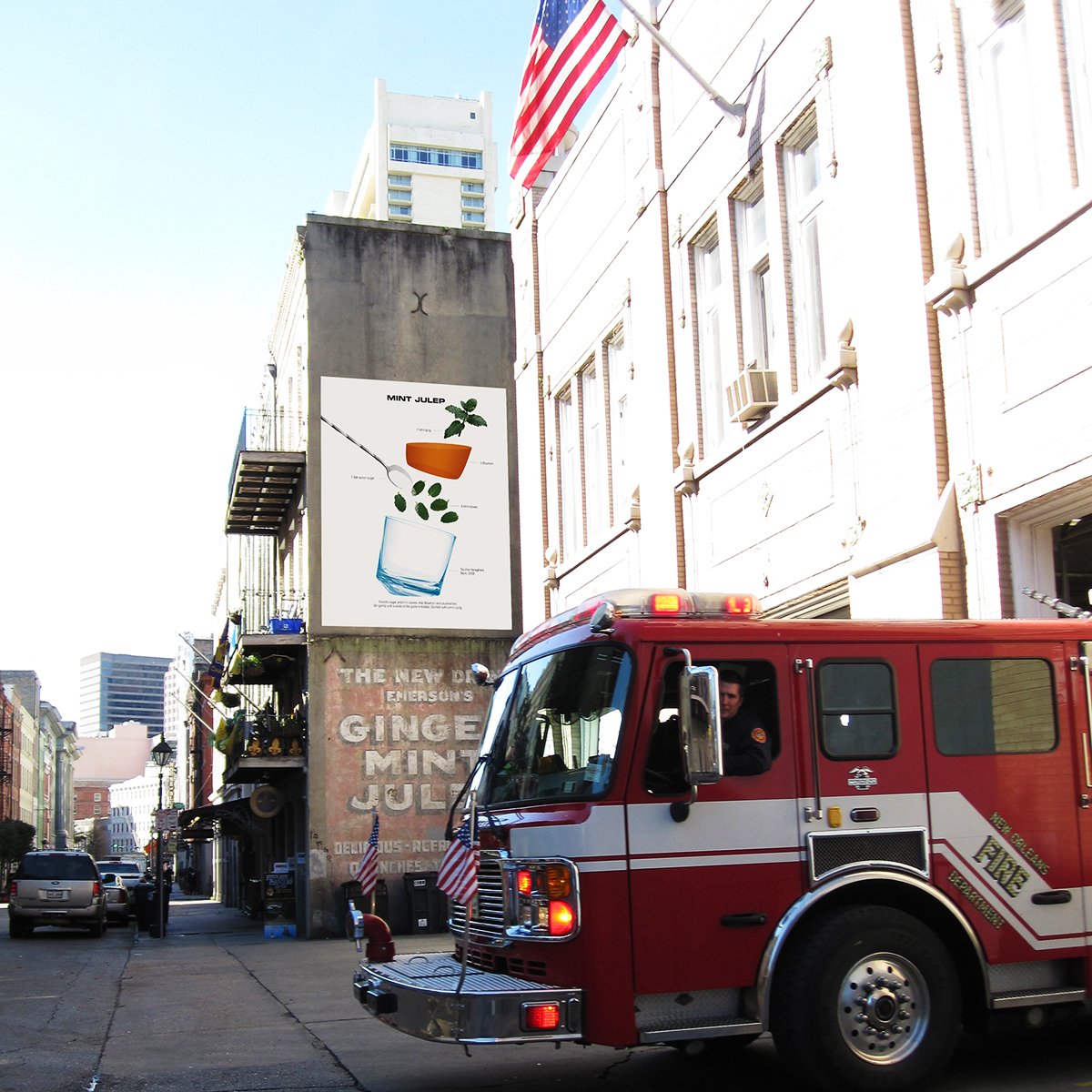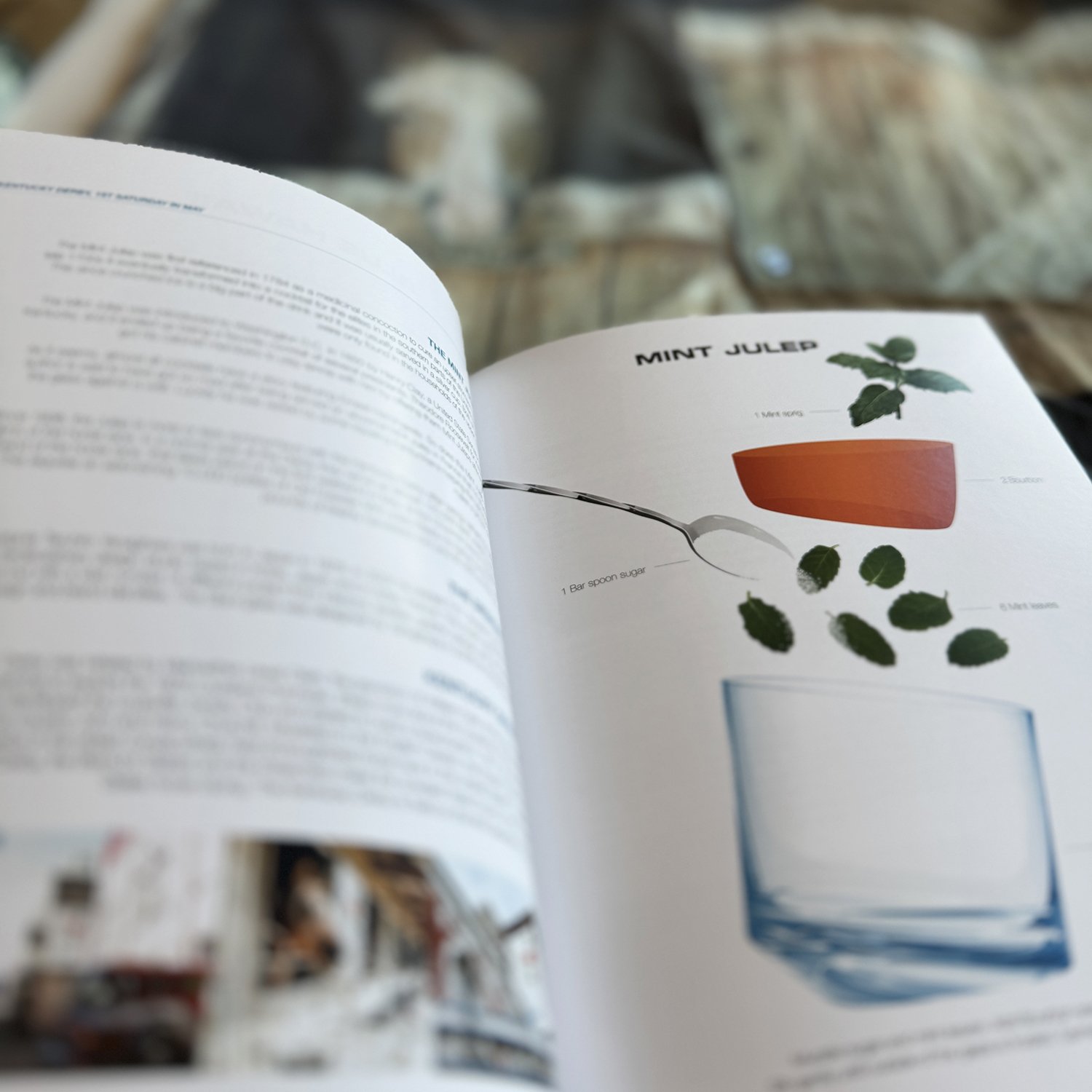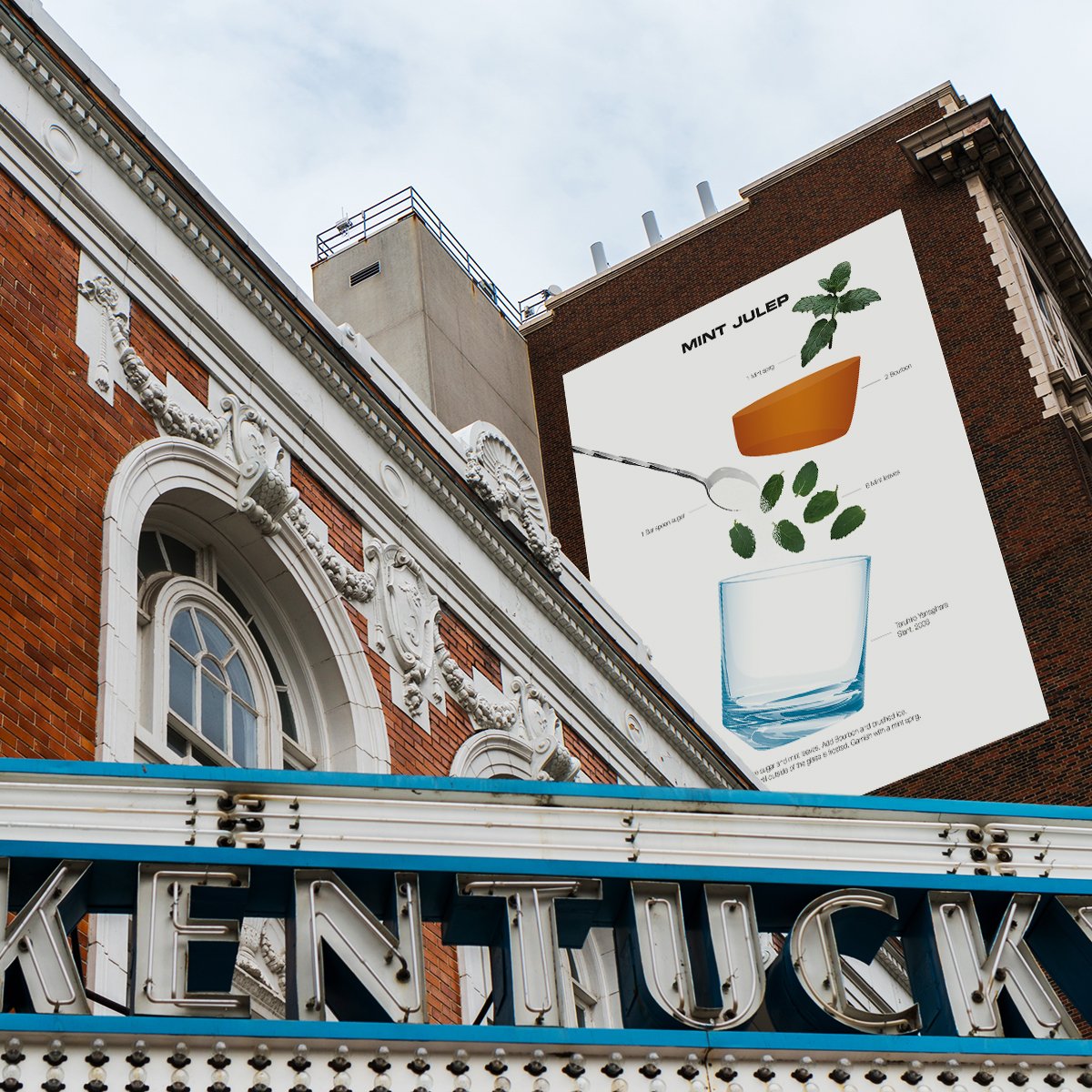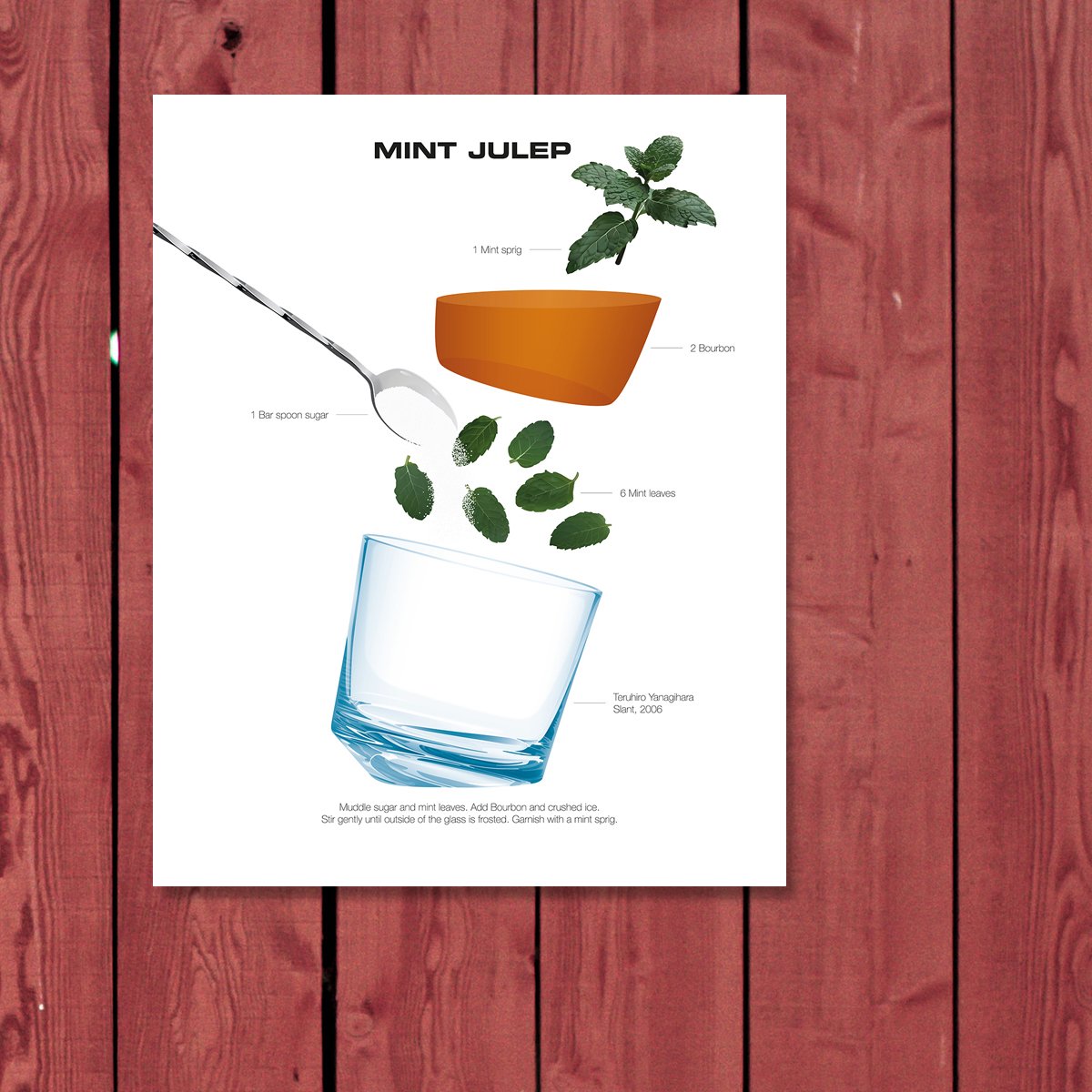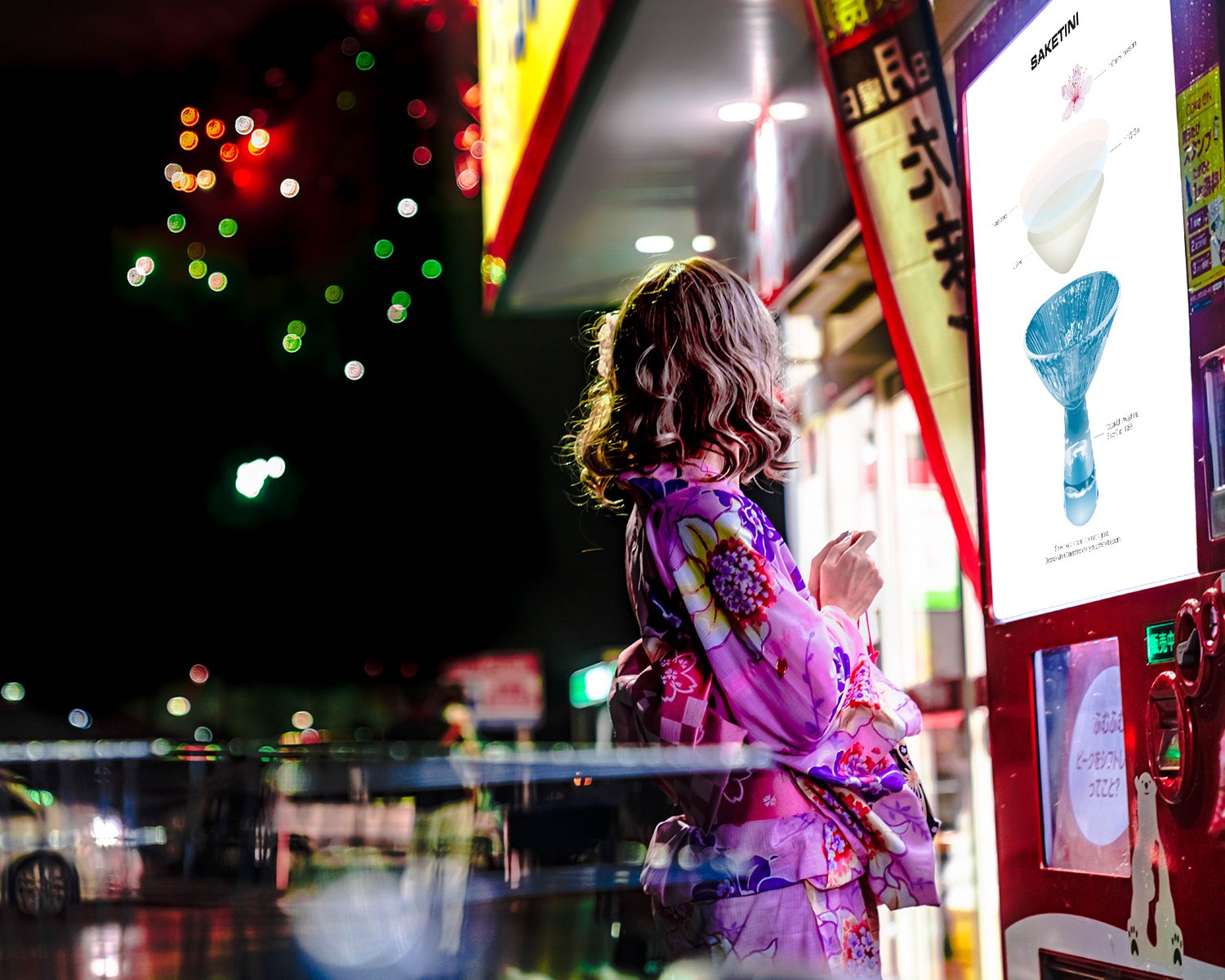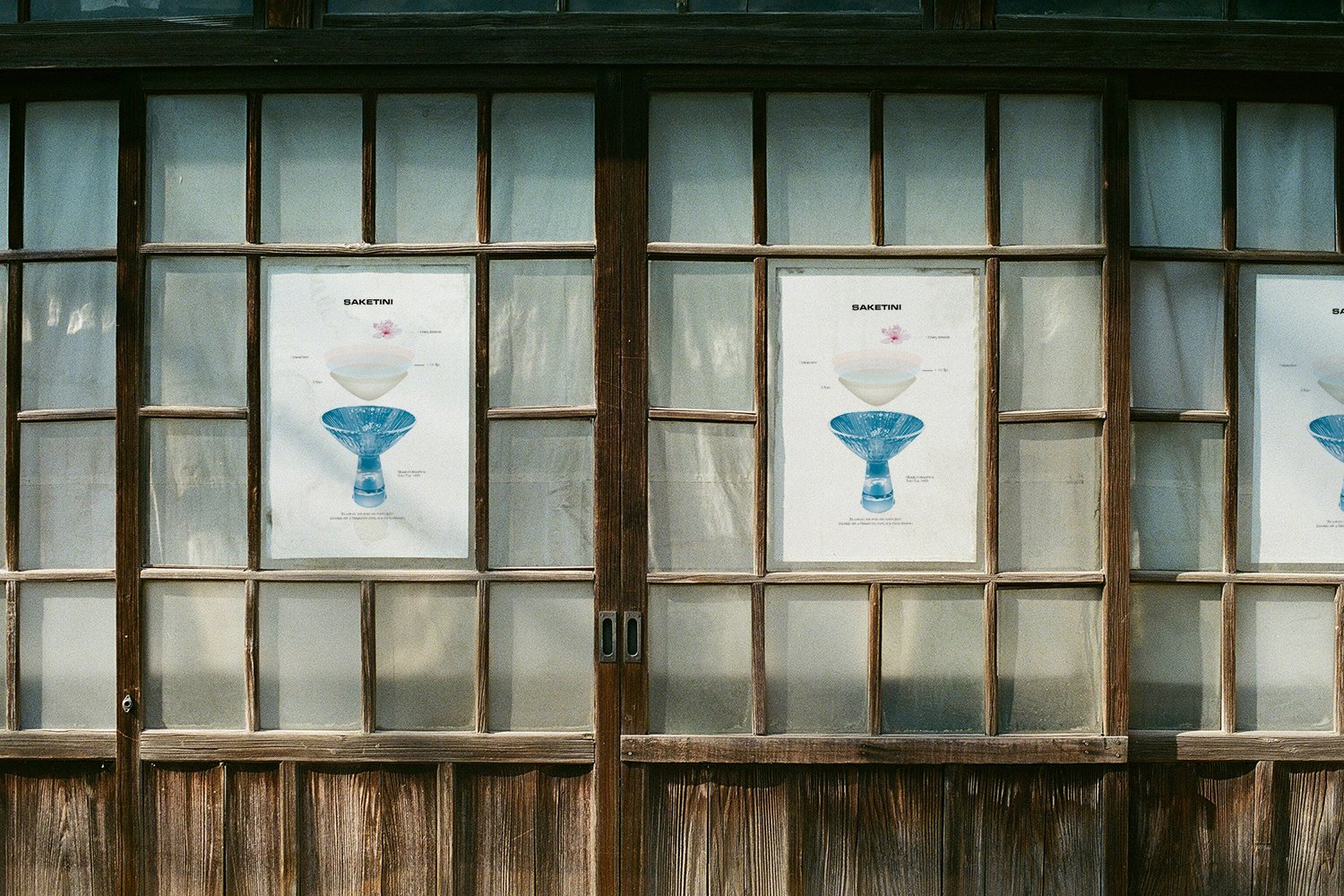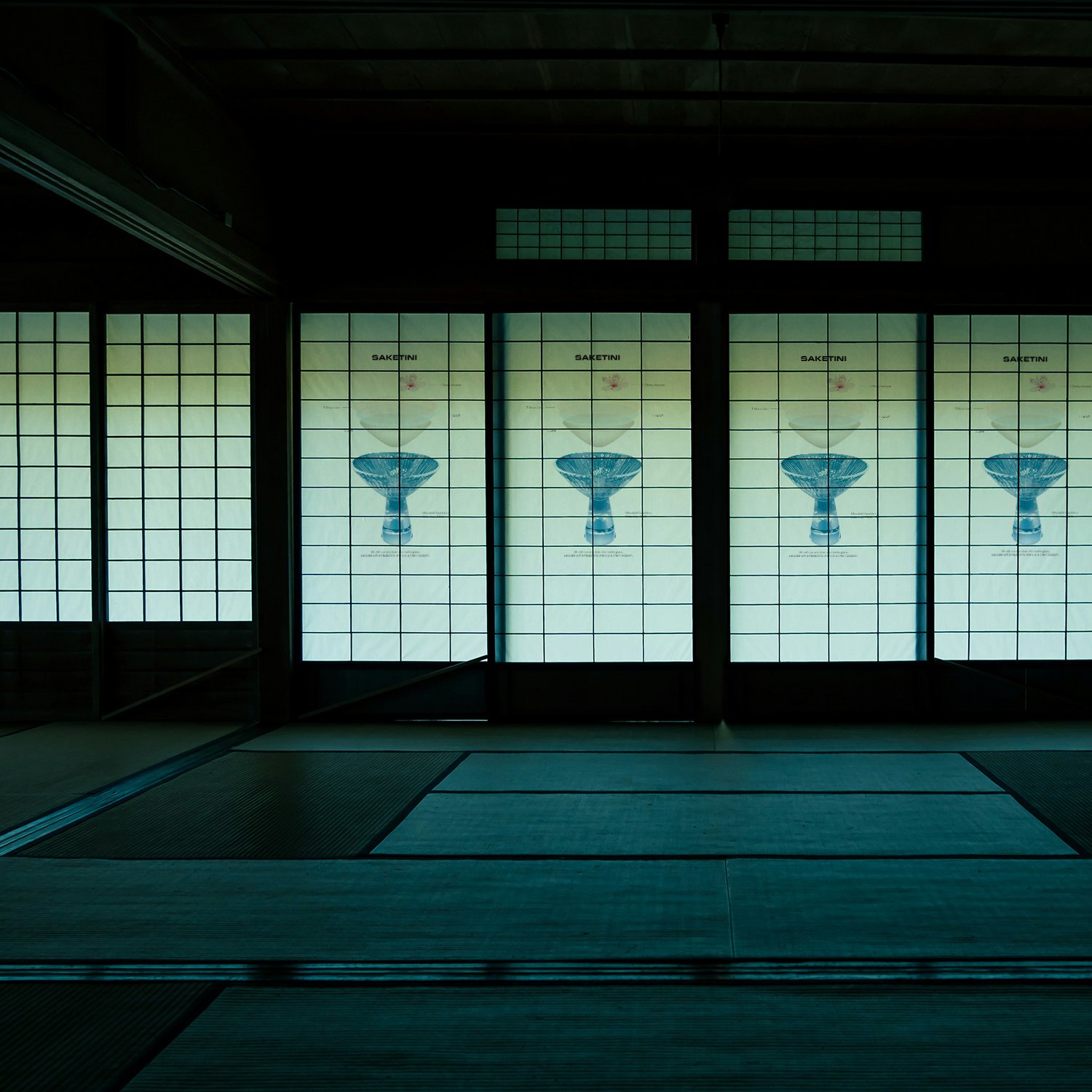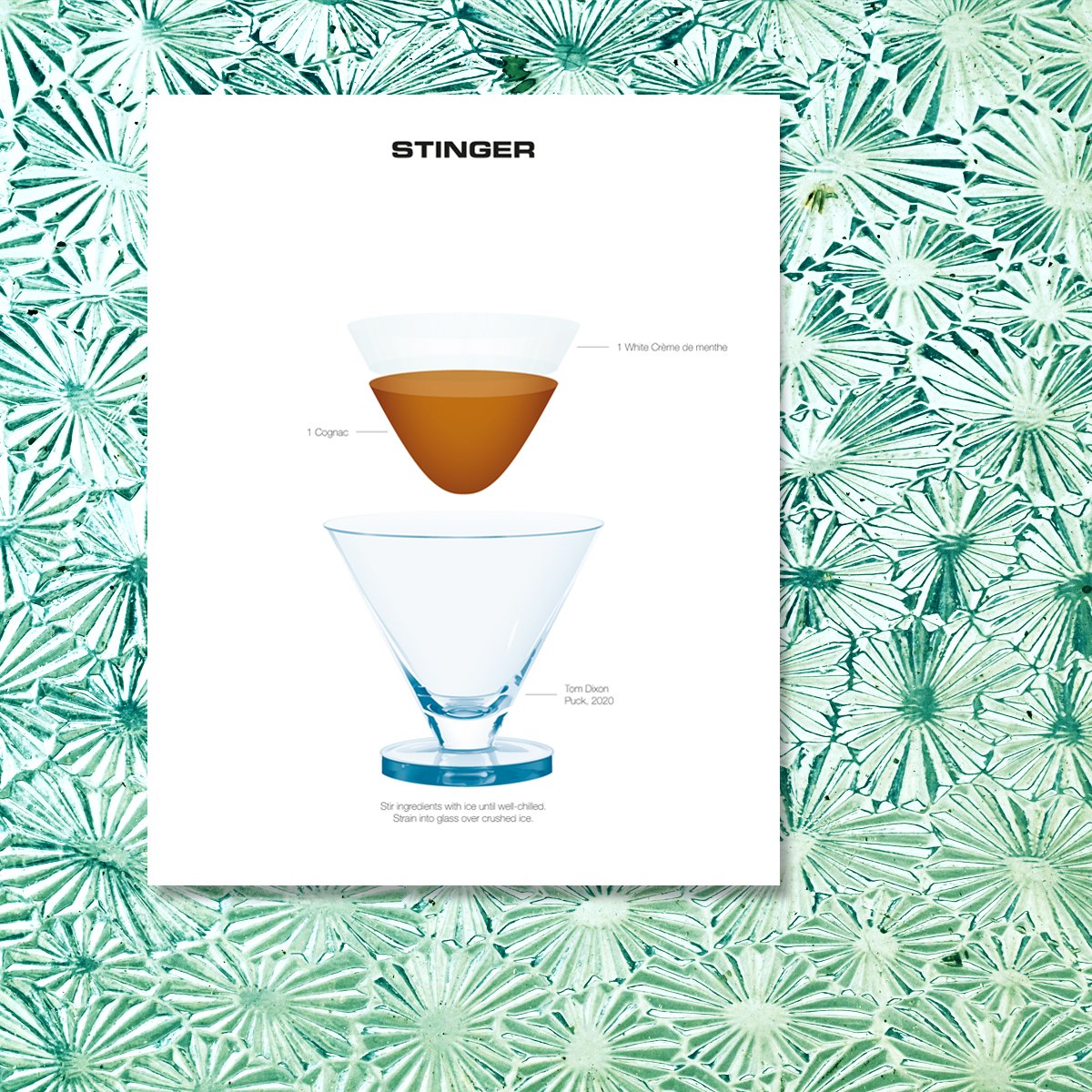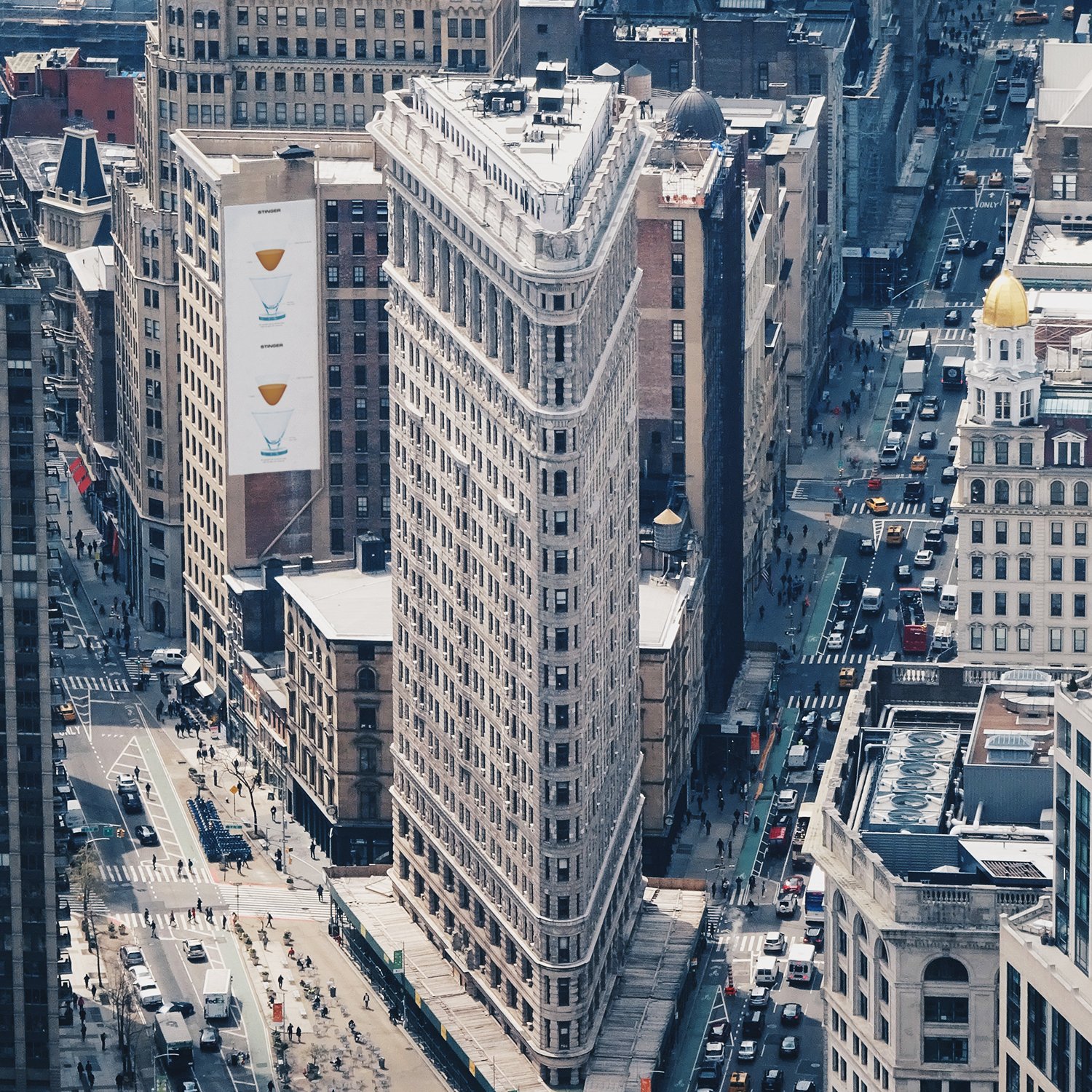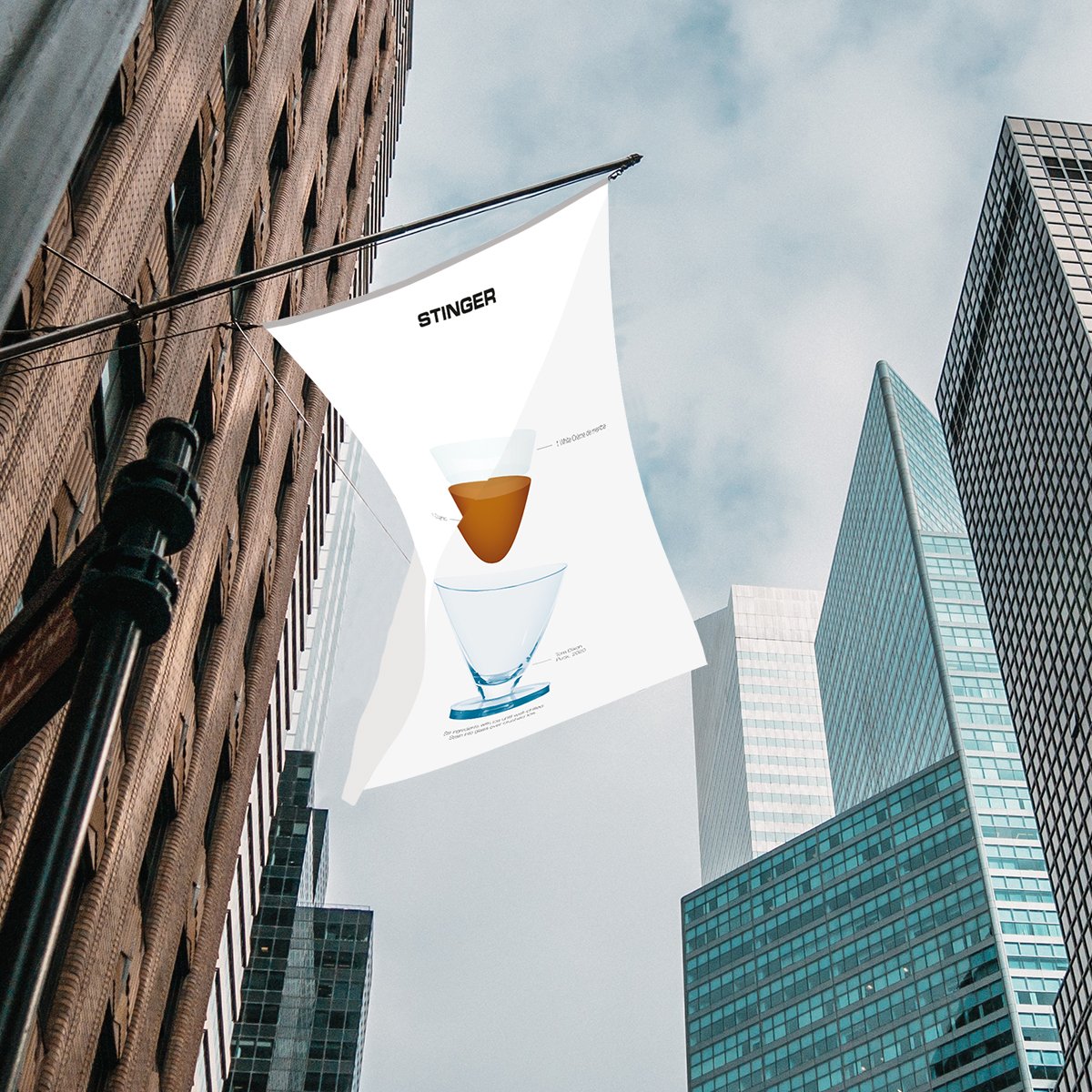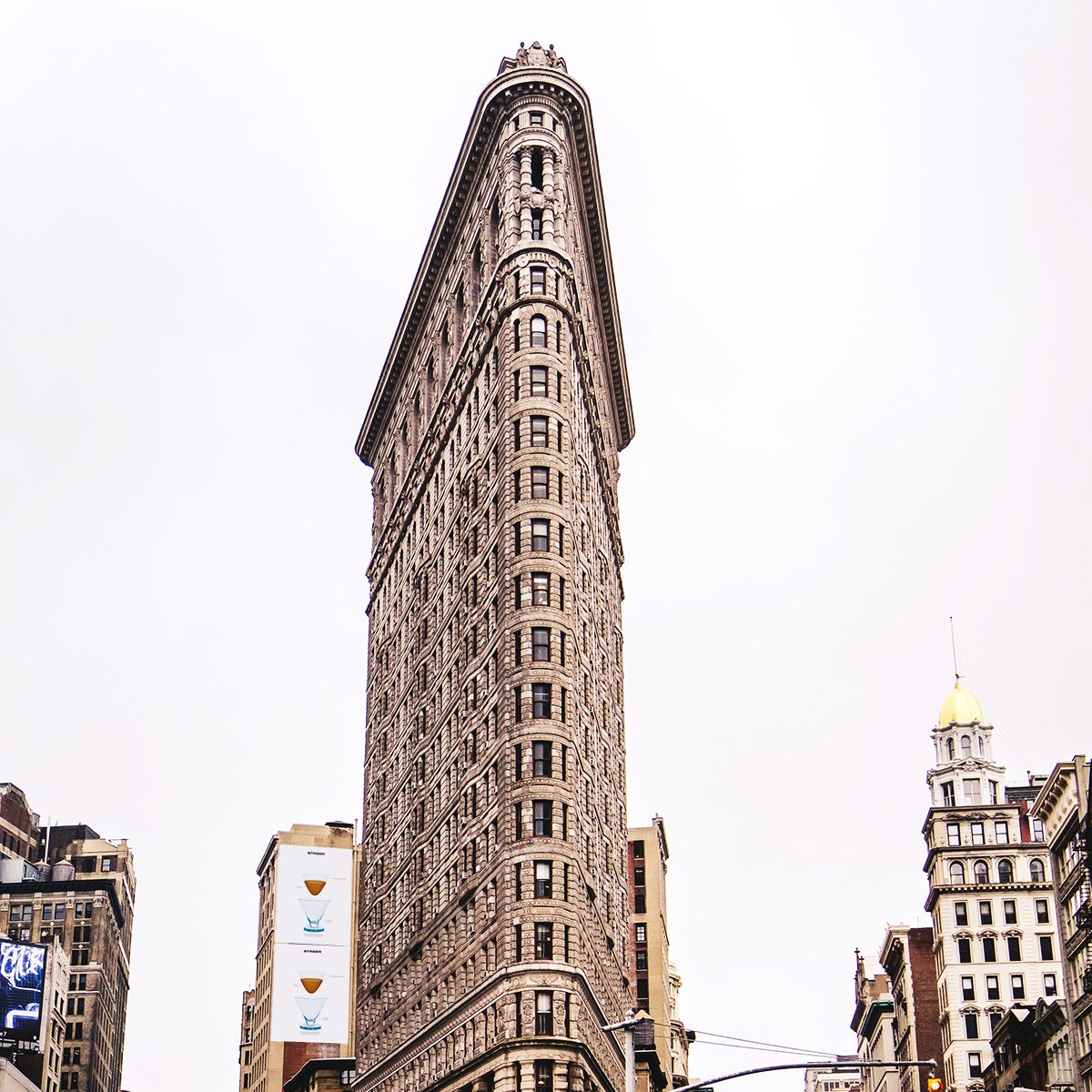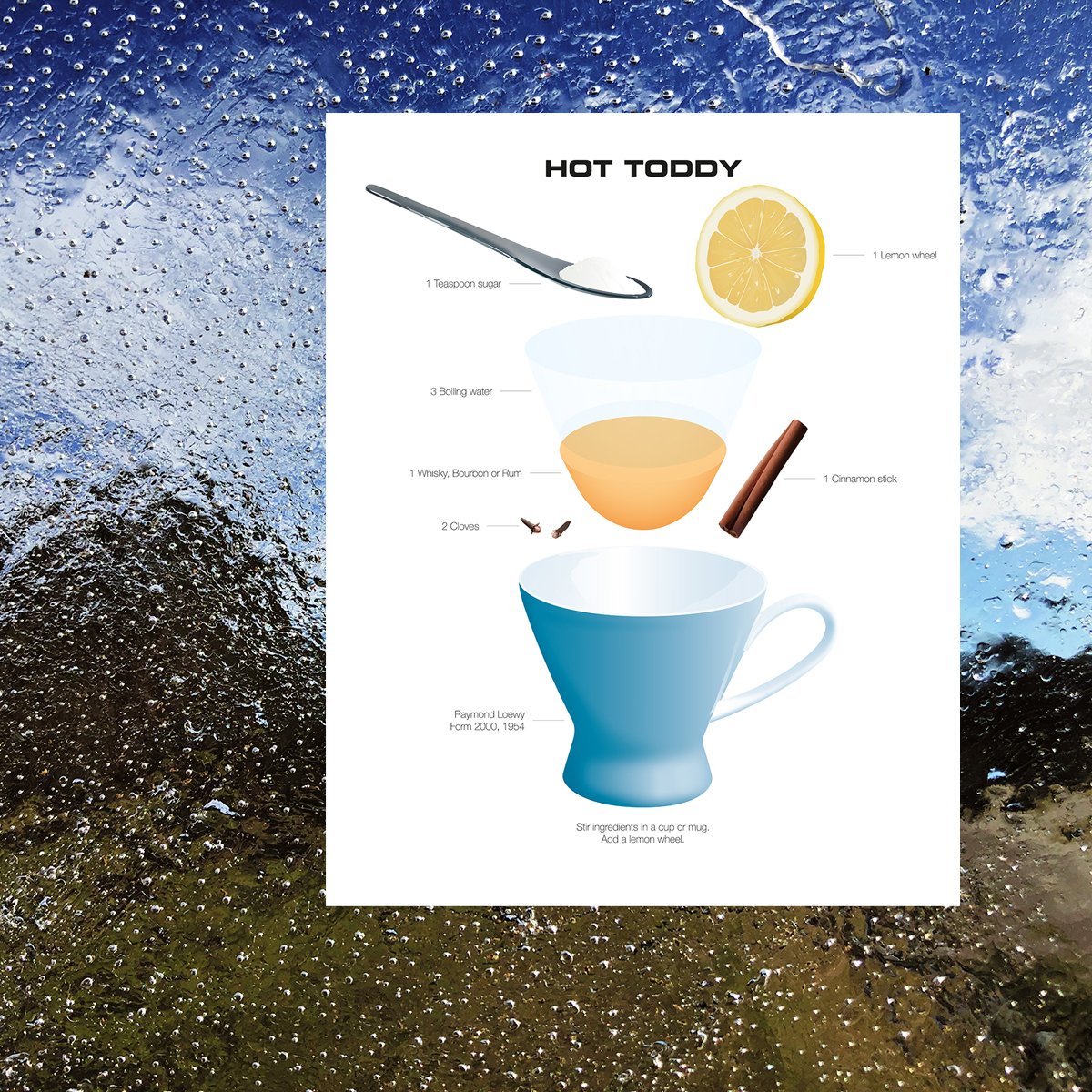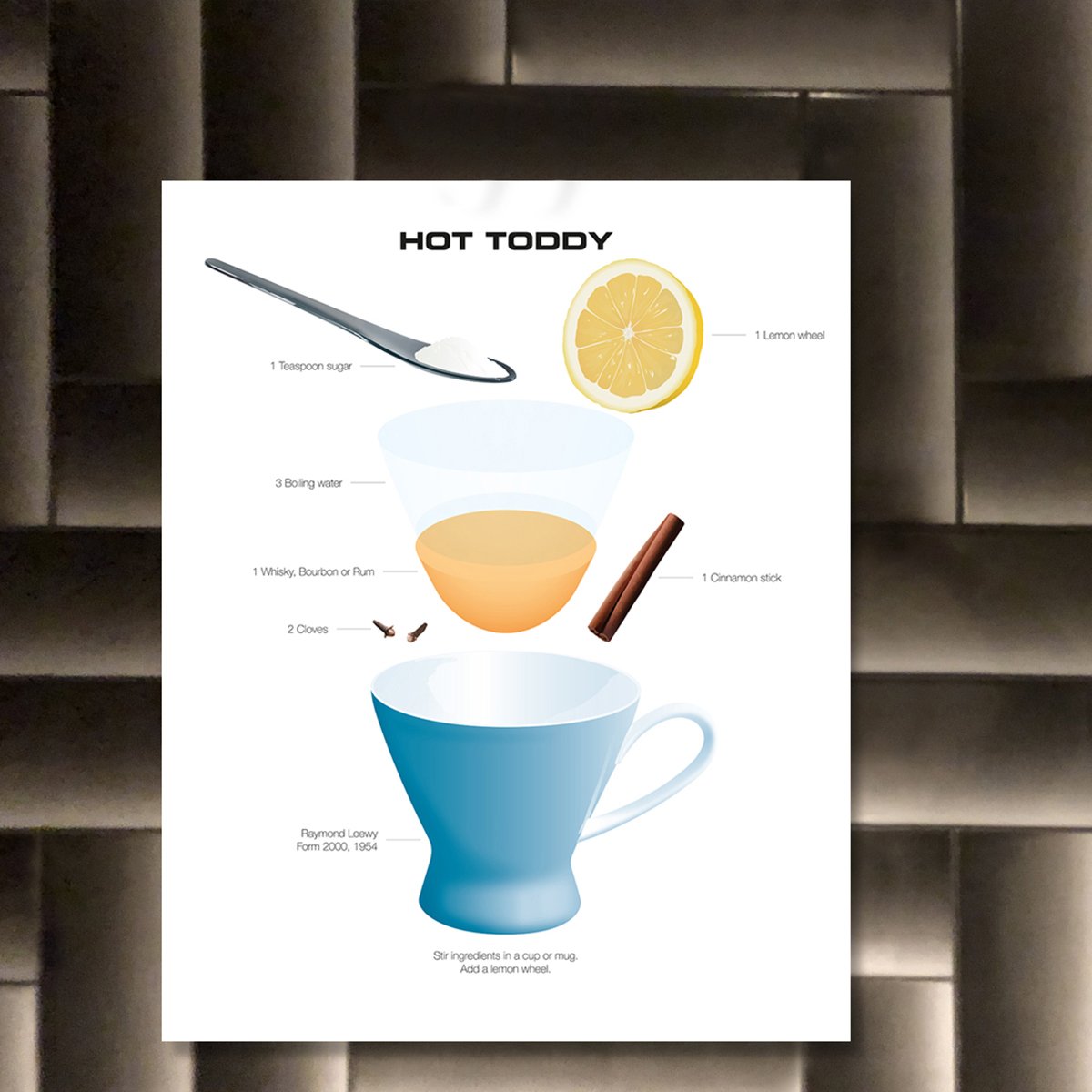HALLOWEEN
Halloween is celebrated every year on October 31. The tradition started as an ancient Celtic festival called Samhain when bonfires were lit and people wore costumes to scare off ghosts. In the eighth century, Pope Gregory III decided that November 1 should be a day to honor all saints. The two celebrations soon merged and the evening before All Saints Day came to be known as All Hallows Eve, later Halloween. In the United States Halloween parties didn’t really take off until the late 19th century when a great amount of Irish immigrants came, fleeing the Irish Potato Famine. So shake up a Bloody Mary, Blood and Sand, Zombie, Death in the Afternoon, El Diablo a Last Word or any other Halloween-like cocktails to celebrate this All Hallows Eve.
THE LAST WORD
The cocktail was invented at the Detroit Athletics Club around 1915, a club originally founded in 1887 but remade in the early 1900s to cater to Car Company executives and other prominent Detroiters. Not only was the club exclusive, the Last Word was the most expensive cocktail at the club selling for 35 cents, twice as much as a Manhattan.
The Last Word might have been made in honor of the New York vaudeville performer Frank Fogarty. He was performing at Detroit’s Temple Theater at the time of the drinks creation, and the name of the cocktail might be an allusion to the monologue with which he closed his act. The recipe for the Last Word didn’t appear in print until Ted Saucier, an authority on food and drink, added it to his 1951 cocktail book Bottoms Up. In the book Saucier, a boulevardier according to New York Times, calls Fogarty “a very fine monologue artist”. After Bottoms Up the drink never really took off, until the early 2000s.
THE DESIGNER
The cocktail glass was designed by Polish-Ukrainian designer Wszewłod Sarnecki in 1964.
The World Mai Tai Day
On August 30, 2009, the city of Oakland declared that from then on August 30 should be World Mai Tai Day. It was a day in August 1944 Victor Bergeron made the first Mai Tai.
THE MAI TAI
The history of the Mai Tai is a story of two tiki bar giants. Victor Jules Bergeron (aka Trader Vic) and Ernest Raymond Beaumont Gantt (aka Donn Beach, or Don the Beachcomber). Donn Beach opened his first South Pacific style restaurant in Hollywood in 1933. He was a rum connoisseur and started making exotic rum drinks inspired by his many travels.
Trader Vic had his own restaurant called Hinky Dinks that he opened in 1934 in Oakland, California. After a trip to Cuba to refine his bartender skills and learn more about rum, the Trader remodeled Hinky Dinks into a Polynesian style tiki bar and changed the name to Trader Vic’s.
The Mai Tai was first made in 1944 for Ham and Carrie Guild, a couple of Tahitian friends of Bergeron’s. They liked it so much Carrie Guild exclaimed in Tahitian “Mai Tai-Roa A’e” meaning “Out of this world, the best”. “That was that”, as Mr. Bergeron said.
Trader Vic and Don the Beachcomber fought over the invention of the Mai Tai for many years but when Mr. Beach claimed the drink to be his the Trader had enough. Donn was sued and lost. Trader Vic stated “There has been a lot of conversation over the beginning of the Mai Tai, and I want to get the record straight. I originated the Mai Tai, but many others have claimed credit … Anyone who says I didn’t create the drink is a dirty stinker.” Victor Bergeron might however have got the inspiration for the drink, along with making a tiki bar out of Hinky Dinks, from Donn Beach so without Donn we probably wouldn’t have the Mai Tai.
THE DESIGNER
The glass, called Pitagora after its triangular base, was designed by Marco Zanuso in 1969.
The Whiskey Sour Day Celebrated With A New York Sour
The Whiskey Sour Day on August 25 each year is a perfect time to try this 19th century classic. Make it with bourbon or whiskey or try New York Sour by adding a Claret float.
THE WHISKEY SOUR
The first time the word sour was used in regards to a drink was in 1856 on a bar menu at Mart Ackermann’s Saloon in Toronto, Canada. In print the sour, brandy and gin, appears for the first time in 1862 in The Bartender’s Guide by Jerry Thomas. Eight years later, the Whiskey Sour makes the stage in Waukesha Plain Dealer, a Wisconsin newspaper. In 1883 the drink had already developed and many bartenders started adding a Claret float, to the drink. Apparently the word Claret was used a bit loosely at the time and didn’t necessarily mean a red wine from Bordeaux. This version came by many names but the bartending world finally settled on New York Sour.
The Whiskey Sour is traditionally made with whiskey, lemon juice, sugar and egg white, an ingredient that will smooth the tartness of the lemon juice and give the drink a frothy topping. The egg white was probably added in the early 1900s. Today the egg white is optional and you often find bars serving the Whiskey Sour without it.
THE DESIGNER
The glass, called Dondolino, was designed by Setsu & Shinobu Ito in 2016 and is painted using a technique with Japanese lacquer called Urushi.
The Sneaky International Rum Day
August 16 is International Rum Day and a great way to celebrate is to make a Sneaky Tiki, a Dark ’n Stormy, a Mai Tai or any other rum based cocktail.
THE SNEAKY TIKI
This is a tiki drink that wasn’t created by one of the tiki bar giants, Trader Vic or Don
the Beachcomber. It was first made either at the Wheel Bar at Harvey’s Casino Resort in Lake Tahoe or at Tiki Bob’s in San Francisco.
Harvey’s first opened right after WWII by gambling pioneer Harvey Gross. The casino started small with just six slot machines and eventually grew to a casino empire. In fact, it was the very first casino in Lake Tahoe, right at the border between Nevada and California.
Another possible creator of the Sneaky Tiki was “Sneaky” Bob Bryant. He worked in San Francisco as a bar manager for Trader Vic’s, who taught him the tricks of the trade. After a falling out with Victor Bergeron, “Sneaky” Bob left and in 1955 he started his own tiki bar just down the street. A bar he named Tiki Bob’s.
Decorated with Polynesian and Asian artifacts and having the guests welcomed by a 50s style tiki column right outside the entrance, Mr. Bryant made a bar rivaling his former employer. The bar’s signature drink was called the Super Sneaky Tiki. “Sneaky” Bob had the foresight to introduce the tiki mug to his bar, a new concept at the time. The design for Tiki Bob’s logo and Tiki mug was made by Alec Yuill-Thornton, an illustrator who had previously worked with Bergeron, illustrating his book Kitchen Kibitzer. Being one of the first Tiki mugs ever created it is highly sought after by collectors.
THE DESIGNER
Alec Yuill-Thornton designed the Tiki Bob tiki mug in 1955.
A Sgroppino on Ferragosto
Ferragosto is celebrated on August 15 every year. It is usually one of the hottest days in Italy and most Italians try to leave the cities. The celebration actually dates back to the year 18 BCE when the Roman Emperor Octavianus Augustus decided to establish several days of formal rest for the hard working agricultural workers of the Roman Empire. Even farm animals were released from work and decorated with flowers. The festivities started August 1 with more days spread out over August. During Roman times it was called Feriae Augusti, Latin for The Holiday of Augustus. (Augustus actually gave name to the month). The Catholic Church eventually decided to move Ferragosto to August 15 to coincide with the Assumption of Mary m. However you celebrate Ferragosto, cooling off the August heat with a Sgroppino is a great way to do it.
THE SGROPPINO
The Sgroppino was probably first created in a wealthy home in Venice during the sixteenth century. To be able to make sorbetto for the Sgroppino you need ice and the only households that kept ice during the Renaissance were the aristocrats and the very upper class. Ice was collected form rivers and lakes during winter and stored in ice houses for use in summer.
The drink could either be served as a palate cleanser or at the end of a meal as you would a limoncello today. The name Sgroppino comes for the Italian word sgropare, in Venetian dialect sgropin, the name still used in Venice, meaning to untie a knot, referring to knots in the stomach after a big dinner. The Sgroppino is made by whisking together sorbetto and prosecco to create a froth. Over time vodka, sambuca or limoncello was added making it more complex.
THE DESIGNER
The Narcisso glass was designed by Italian-American designer and sculptor Isabel Antonia Giampietro-Knoll in 1957.
The Bellini and the Prosecco Day
Prosecco Day is celebrated each year on August 13, initiated by Riondo Prosecco to celebrate the sparkling wine from the Italian North-East an hour from Venice.
THE BELLINI
The 15th century Venetian artist Giovanni Bellini, was famous for his vibrant colors and the bartender Giuseppe Cipriani was a big fan. When working at Hotel Europa in Venice in 1927 Cipriani got to know Harry Pickering, a young Bostonian, who was traveling with his wealthy aunt. After a fight his aunt left with her boyfriend and her money leaving Harry penniless with her dog. Giuseppe Cipriani lent Pickering 10,000 lire, an enormous amount of money for a bartender in 1927. Four years later, in February 1931, Pickering returned, not only with the 10,000 he borrowed but adding another 40,000. Enough money for Cipriani to open a bar of his own. His wife Giulietta found the perfect spot. A small old warehouse at the end of a cul-de-sac, just a stones throw from Piazza San Marco. It was exactly what they were looking for, a discreet 45 square meter bar right by the canal, a place customers had to know to go there. As a gesture of gratitude he named it Harry’s Bar.
Cipriani loved white peaches, which are plentiful in Italy from June to September. In 1948 he started making a white peach puree and adding prosecco. His customers loved it and a classic cocktail was born. He named it after his favorite painter due to the pink glow of the drink resembling a pink toga in a Bellini painting.
Over time Harry’s Bar became the favorite hangout for writers, actors and artists like Ernest Hemingway, Huphrey Bogart, Peggy Guggenheim, Charlie Chaplin and Lauren Bacall. In 2001 Harry’s Bar was declared a national landmark.
THE DESIGNER
The Jellies Family Flute was designed by Patricia Urquiola for Kartell in 2014.
The Perfect Cocktail for The World Tequila Day
The origins of tequila dates back to the Aztecs who used fermented sap of the agave plant for religious ceremonies. In the 16th century Spanish conquistadors arrived and introduced the distillation technique and the national spirit of Mexico was born. Tequila is divided into three different categories: Blanco, Reposado and Añejo. The blue agave is only allowed to be grown, and the tequila has to be distilled, in five designated regions in Mexico. Guanajuato, Michoacan, Nayarit, Tamaulipas and Jalisco. On World Tequila Day, July 24 this very Mexican spirit, on the rise all over the world, is celebrated.
EL DIABLO
El Diablo was first mentioned in Bergeron’s “Trader Vic’s Book of Food and Drink” from 1946 and started out as The Mexican El Diablo. It was marked with a TV in his book, to show that it is a Trader Vic original. Bergeron added a little warning to the recipe remarking that “I hate like hell to bring up unpleasant things at a time like this but go easy on this one because it’s tough on your running board”. The drink was taken off the Trader Vic’s menu in the 1950s but reappeared some years later in Bergeron’s next venture. In the early 1960s Bergeron was asked by a friend to open a restaurant in Ghirardelli Square, San Francisco. Wanting to open something Mexican he traveled all over Mexico for inspiration and was surprised he couldn’t find many drinks made with tequila, apart from the occasional Margarita or Tequila Sunrise (the original version created made with tequila, crème de cassis, lime and soda water). When opening his new Mexican restaurant, Señor Pico, in 1964, Bergeron added the drink to the menu and simplified the name of the drink to El Diablo, a name has been used since.
THE DESIGNER
The glass called Ginette was designed by Kenji Matsuura for Sugahara in 2010.
The Apollo 11 Moon Landing and the Moonwalk Cocktail
It took the crew on Apollo 11 only 12 minutes to leave Earth and start orbiting the planet but another three days to reach lunar orbit. With 650 million people watching on television all over the world and with only 30 seconds of fuel remaining the Eagle landed in the Sea of Tranquility. At 10:56 p.m. EDT Neil Armstrong climbed down the ladder and became the first human to ever set foot on the lunar surface proclaiming “That’s one small step for a man, one giant leap for mankind”. During two hours Armstrong and Buzz Aldrin collected samples and took photos before leaving an American flag to returning to Collins waiting in the orbiting command module, Columbia. After another four days they landed in the ocean outside Hawai’i in July 24.
THE MOONWALK
The Apollo 11 moon landing in the Sea of Tranquility was an incredible feat of engineering, effectively making the United States take the lead in the space race.
After returning to earth and a 21 day quarantine (nobody knew what disease or bacteria could be caught during space travel) the crew went on a 45 day, 24 country celebratory Apollo 11 “Giant step Presidential Goodwill World Tour”.
Before traveling across the globe they celebrated with cocktails and the first cocktail they had after returning from space was a Moonwalk. The cocktail was the invention of Joe Gilmore, head bartender at the Savoy’s American Bar in London. Even though the world tour took the astronauts to London Mr. Gilmore never got a chance to serve them his concoction at his bar. Instead he made the crew a batch of the cocktail and sent it to the US along with champagne and glasses.
THE DESIGNER
The glass, called Moonshot, was
made to honor the Apollo 11 expedition. Designed and produced by Libbey in 1969.
The Daiquiri Day
In 1898 an American engineer, Jennings Stockton Cox, led a mining exhibition in the small town of Daiquiri in Cuba. While entertaining guests when he ran out of gin. To keep the party afloat Cox went out and bought rum that was readily available in Cuba. July 19 is Daiquiri Day, a perfect day to raise your glass to Jennings Stockton Cox, to Constantino Ribalaigua or to Ernest Hemingway for that matter.
THE HEMINGWAY DAIQUIRI
”El Rey de los Cocteleros”, or Constantino Ribalaigua Vert, was born in 1888 and learned the trade from his father. At 26 he tended the bar at El Floridita, at 30, in 1918, he had made enough money to buy the bar. During thirty years Constante, as his customers called him, invented more than 200 cocktails, catering to a flow American tourists. The amount of tourists coming to Havana doubled during Prohibition from 45,000 per year in 1916 to 90,000 in 1926.
One of the most famous of El Floridita’s customers was undoubtedly Ernest Hemingway. In the early 1930’s being fairly new to the city, Hemingway was on the way back to his hotel when he ventured into El Floridita in search of a restroom. Some guests were going on about their excellent daiquiris. Hemingway ordered one, then asked for another, this time with less sugar and double the rum. That was the birth of the Papa Doble (Papa after his Cuban nickname and Doble for the double amount of rum). This first version was way too strong to be enjoyed by any other than Hemingway. He boasted having had 17 Papa Dobles in one go in 1942, amounting to about 1.5 liters of rum.
Over time Ribalaigua added grapefruit juice and maraschino to the rum and fresh lime juice. Ribalaigua gave this modified Papa Doble the name Hemingway Daiquiri.
THE DESIGNER
The glass, Model I-103 was designed in 1956 by Timo Sarpaneva.
The World Mojito Day
The Piña Colada Day was declared a holiday by Ricardo A. Cofresí in Puerto Rico in 1978, in honor of the drink, now known as a symbol of Caribbean culture. The best place to experience it is definitely at its birth place at the Caribe Hilton in Puerto Rico.
THE PIÑA COLADA
Piña Colada, means strained pineapple, and is referring to the freshly pressed and strained pineapple juice in the drink. The first time a drink named Piña Colada was mentioned in print was in an issue of Travel Magazine from December 1922. It was made with Bacardi Rum, pineapple juice, lime and sugar but most importantly, it did not include coconut. The name however, fits very well with this pineapple cocktail.
Nowadays, a Piña Colada is generally thought of as a creamy coconut-tasting drink and the original is usually referred to as a Cuban-style Piña Colada. The modern Piña Colada was invented on August 15, 1952 (the Caribe Hilton say 1954), after three months of hard work. Ramón “Monchito” Marrero Perez, the head barman at the Caribe Hilton in Old San Juan, Puerto Rico was trying to create a signature cocktail for the hotels Beachcomber Bar. He eventually landed on the Piña Colada possibly just adding Coco López cream of coconut, a new product in Puerto Rico at the time, to the existing Cuban drink. The change was big enough though to be considered an entirely new drink.
For 35 years Mr. Perez personally served Piña Coladas at the Caribe Hilton, making it so popular it was made the official drink of Puerto Rico in 1978. In 2004 the Caribe Hilton was presented with a official proclamation signed by Sila María Calderon, the Governor of Puerto Rico, in honor of the 50 year anniversary of the famous cocktail.
THE DESIGNER
The glass was designed by Agustina Bottoni in 2020 and is called High Spirits.
The Piña Colada Day
The Piña Colada Day was declared a holiday by Ricardo A. Cofresí in Puerto Rico in 1978, in honor of the drink, now known as a symbol of Caribbean culture. The best place to experience it is definitely at its birth place at the Caribe Hilton in Puerto Rico.
THE PIÑA COLADA
Piña Colada, means strained pineapple, and is referring to the freshly pressed and strained pineapple juice in the drink. The first time a drink named Piña Colada was mentioned in print was in an issue of Travel Magazine from December 1922. It was made with Bacardi Rum, pineapple juice, lime and sugar but most importantly, it did not include coconut. The name however, fits very well with this pineapple cocktail.
Nowadays, a Piña Colada is generally thought of as a creamy coconut-tasting drink and the original is usually referred to as a Cuban-style Piña Colada. The modern Piña Colada was invented on August 15, 1952 (the Caribe Hilton say 1954), after three months of hard work. Ramón “Monchito” Marrero Perez, the head barman at the Caribe Hilton in Old San Juan, Puerto Rico was trying to create a signature cocktail for the hotels Beachcomber Bar. He eventually landed on the Piña Colada possibly just adding Coco López cream of coconut, a new product in Puerto Rico at the time, to the existing Cuban drink. The change was big enough though to be considered an entirely new drink.
For 35 years Mr. Perez personally served Piña Coladas at the Caribe Hilton, making it so popular it was made the official drink of Puerto Rico in 1978. In 2004 the Caribe Hilton was presented with a official proclamation signed by Sila María Calderon, the Governor of Puerto Rico, in honor of the 50 year anniversary of the famous cocktail.
THE DESIGNER
The glass was designed by Agustina Bottoni in 2020 and is called High Spirits.
A World Filled With Cocktails
On May 13 in 1806 the first known definition of the word cocktail was published in an upstate New York newspaper, The Balance and Columbian Repository. The cocktail, as they wrote it, was described as “a stimulating liquor, composed of spirits of any kind, sugar, water and bitters”. This is also the date Giuseppe Cipriani opened Harry’s Bar in Venice in 1931, home of the Bellini.
THE BEE’S KNEES
The Bee’s Knees was possibly created by the Austrian Frank Meier, during the 1920s when he was the first head bartender at Cafe Parisian at the Ritz Hotel in Paris. During WWII and the German occupation of Paris, Mr. Meier kept the bar open but being half Jewish he started working with the French resistance and handed information about the Germans staying at the Ritz to British intelligence. He also helped Jewish hotel guests escape the concentration camp roundups by providing them with fake documents.
The first time the cocktail was mentioned was in a news article from 1929 where it was attributed to the American socialite Margaret Brown. The article was about women-only bars in Paris and Margaret Brown, being a wealthy widow, shared her time between her home in Denver, Colorado and Paris where she was a frequent guest in these women-only bars. On a side note Margaret Brown also went by her nickname “the Unsinkable Molly Brown” after being one of the 712 people surviving the Titanic in 1912. Yet another background story is that the honey used in the Bee’s Knees was added since it is a great way to hide the harsh taste of cheap bathtub gin. Putting it all together Margaret Brown might have had the cocktail in an American speakeasy and brought the recipe to Paris where Frank Meier made it his own. If so, all three origin stories could be true. But that, of course, is just mere speculation.
THE DESIGNER
Astrid Luglio designed the glass called Travasi in 2023.
The Kentucky Derby
The Kentucky Derby was initiated by Meriwether Lewis Clark, the grandson of William Clark of the Lewis and Clark expedition aiming to explore the 1803 Louisiana purchase. Clark developed the Louisville Jockey Club and started to build a racecourse in 1874 on land that he leased from his cousins John and Henry Churchill. Modeled on the English Classic, the Epsom Derby, the annual Kentucky Derby is the oldest consecutively held thoroughbred horse race in the United States. Together with the Kentucky Derby, the Belmont Stakes and the Preakness make the coveted Triple Crown of the United State horse racing. The Kentucky Derby is held on the first Saturday in May. This year the Kentucky Derby celebrates its 150 year anniversary.
THE MINT JULEP
The Mint Julep was first referenced in 1784 as a medicinal concoction to cure an upset stomach. In the late 1700s it eventually transformed into a cocktail for the elites in the southern parts of the United States. This since crunched ice is a big part of the drink and it was usually served in a silver cup. Both of which were only found in the households of the upper class. The Mint Julep was introduced to Washington D.C. in 1850 by Henry Clay, a United State Senator from Kentucky, and it ended up being a favorite cocktail of several presidents. Theodore Roosevelt for instance got his cabinet members to play tennis with him by offering them Mint Juleps afterwords.
In 1938, the Julep was named the official drink of the Kentucky Derby. In a normal year at the Derby they serve up almost 120,000 Mint Juleps over the weekend. This requires an astonishing 10,000 bottles of Old Forester Mint Julep Ready-to-Serve Cocktail, 1,000 pounds of freshly harvested mint and 60,000 pounds of ice.
THE DESIGNER
The Slant glass was designed by Teruhiro Yanagihara in 2006 for Kimura Glass.
The Saketini Just Turned 60
THE OPENING OF NEW YORK’S WORLD’S FAIR 1964
New York World’s fair ran two six-month periods, April 22 – October 18, 1964, and April 21 – October 17, 1965. It was held in Flushing Meadows-Corona Park in the borough of Queens, New York and featured over 140 pavilions and 110 restaurants, representing 80 countries. The fair was attended by more than 51 million people, but with an expected 70 million, it was far from an economic success. Meant to showcase the future many pavilions were built in a Mid-century modern style influenced by jet aircraft and the Space Age. The most popular pavilion was General Motors Futurama II, letting the visitors experience life in the “near future” with realistic 3D models. IBM featured a theater designed by Eero Saarinen showing a film by Charles and Ray Eames about computer logic. The most unexpected pavilion might have been the Vatican’s that incredibly brought Michelangelo’s priceless sculpture Pietà from St. Peter’s Basilica in Rome. Of course, there was also the Japanese pavilion where you could sample the novelty cocktail Saketini.
THE SAKETINI
The origins of the Saketini cocktail are not entirely clear. It is said to have been invented by Matsuda-san, a chef from Queens who introduced the drink at the Japanese pavilion at the New York World’s Fair in 1964.
After the World’s Fair the recipe for the Saketini was lost and the cocktail led an all but forgotten life until the Martini craze of the 1990s. Even though the Saketini was invented long before this the cocktail historian David Wondrich still puts the Saketini (maybe a bit unfairly) in “that sickly and dismal tribe” of chocolate martinis, mango martinis, and appletinis. Another possible origin story is that the Saketini was invented at the first Benihana restaurant on West 56th Street in New York City. Benihana was founded by 25-year old Hiroaki Aoki the same year as the World’s Fair, in 1964, and the cocktail is said to first having been made the year they opened.
THE DESIGNER
The Japanese glassware designer Masakichi Awashima as born in 1914. After graduating from the Japan Art School in Tokyo he worked for Kozo Kagami who had learned western glass blowing techniques in Germany. The sake cup was designed by Awashima in 1958.
How To Mix It
Preparations.
I am happy to have been chosen to hold a cocktail class teaching how to make some remarkable cocktails from A Year of Cocktails along with some basics. What to shake, stir and build and how does the different techniques change the cocktail. For the class I picked four different cocktails and a bonus one starting with the Moonwalk, Joe Gilmore’s cocktail to celebrate the moon landing. The next three were Ada “Coley” Coleman’s Hanky Panky from the 1920s, The Sazerac by Antoine Peychaud from 1838, and finally Trader Vic’s Mai Tai from 1944. As a bonus I added the Whiskey Sour so that the participants would be able to practice a dry shake. It’s always great to be able to share some cocktail tips along with the cocktail history, which was essentially the purpose of A Year of Cocktails in the first place.
Happy Birthday Reginald Vanderbilt
The Stinger is a classic pre-Prohibition cocktail, likely created at the beginning of the 20th century. Possibly made as a simplified version of the Judge, a cocktail from 1890 made with brandy, crème de menthe and simple syrup. The first time it appeared in print was in 1914 in a book simply called Drinks by Jacques Straub. The cocktail historian David Wondrich wrote in his book Imbibe that an Ohio newspaper have credited Reginald Vanderbilt with the cocktail. The newspaper claimed in 1923 that Vanderbilt had served his guests Stingers since the early days of the 1900s, writing that he “was observed in all its pomp and glory in the bar of his home, and he himself was the high priest, the host, the mixer.” The article described the drink as “a short drink with a long reach, a subtle blend of ardent nectars, a boon to friendship, a dispeller of care.” According to legend Vanderbilt spent three hours a day mixing them for his guests during cocktail hour at his Fifth Avenue mansion. Reginald Vanderbilt can also be credited, if that is the right word, for making this classic after dinner cocktail to an aperitif. Unfortunately Reginald Vanderbilt liked both gambling and Stingers a bit too much. When he passed away in 1925 at the age of 45 he had, according to the Washington Post, squandered the fortune left to him by his grandfather. “No one can make money evaporate into thin air like a Vanderbilt”, as Anderson Cooper put it in his book Vanderbilt. The Rise and Fall of an American Dynasty.
The Stinger has since the days of the Vanderbilts been associated with the upper echelons of society and is featured in many movies like High Society from 1956 with Frank Sinatra and Bing Crosby. It was also part of the plot in Kiss Them for Me from 1957 when Cary Grant asks a bartender to “keep the Stingers coming” to be able to deal with an overtly talkative character played by Jayne Mansfield. James Bond drinks a Stinger in the 1956 Diamonds Are Forever since Ian Fleming, along with many other writers, was a big fan himself. Evelyn Waugh considered the Stinger to be his signature cocktail.
The Designer
Tom Dixon was born in Tunisia in 1959 and moved to England in 1963. He started his career as a self taught designer during the 1980s and soon got noticed for his line of welded salvage furniture. In 1987 he made a prototype for his famous S-Chair that was picked up by the Italian furniture company Cappellini who have manufactured it since 1991. Dixon has made a name for himself as an incredibly versatile designer making everything from furniture, lighting, accessories and interiors. The Puck cocktail glass was designed by Dixon in 2020 using the basic forms of geometry.
Reginald Vanderbilt’s Birthday
Reginald Claypoole Vanderbilt was born on January 14, 1880 into the wealthiest family in the United States. He was the great grandson of railroad tycoon Cornelius Vanderbilt and was famous for gambling and his love of cocktails, especially the Stinger. He is even more famous for fathering the fashion designer and socialite Gloria Vanderbilt and being the grandfather of the journalist, writer and news anchor Anderson Cooper.
Happy Hot Toddy Day
The history of the Toddy dates all the way back to British-controlled India in the early 17th century. The Hindi word “taddy” meant “beverage made from fermented taddy palm sap” a drink that was served cold. By 1786 the British had changed the official meaning of taddy and defined it as “a beverage made of alcoholic liquor with hot water, sugar, and spices.” The British claimed it as their own and started serving it in pubs during the winter months using Scotch whisky, hot water and exotic spices from India.
At the time of the American revolutionary war in 1775 the Hot Toddy had reached North America. The soldiers exchanged the Scotch to rum and brandy and drank it before battle as a “liquid courage.”
Another story tells of a 19th-century Irish physician, a Dr. Robert Bentley Todd who used to prescribe his patients a mix of brandy, cinnamon, sugar and hot water, making it a Toddy. An article in a Vermont newspaper from 1837 about “How to Take Cold” made the Hot Toddy out to be a cure-all. The trick, the article stated, if your child begins to snuffle, has a fever and you don’t want to call on a doctor, is to first feed it excessive amounts and then give it a Hot Toddy. These recommendations have changed a bit since.
Dubbed by the press as “The Man Who Shaped America” Raymond Loewy was an American industrial designer born in Paris, France in 1893. Loewy moved to New York in 1919 where he first worked as an illustrator for Vogue and Harper’s Bazaar. During his career he made everything from streamlined locomotives, buses, cars, interiors for the Concorde and for the Apollo space mission to logos for Exxon, Shell, TWA, BP. He designed the cup, Form 2000, in 1954 for Rosenthal.
Celebrate the Hot Toddy Day with this magnificently warming drink made with your favorite barrel aged spirit. Be it rum, whisky, bourbon, brandy or cognac.
Bloody Mary Day, January 1
After a long night of New Years Eve parties, January first was the natural candidate for becoming Bloody Mary Day even though a Tomato Juice Cocktail or a Virgin Mary might be better for recuperating.
The predecessor to the Bloody Mary drink was the Oyster Cocktail, a drink that reportedly came to London from the Manhattan Club in New York in 1892. The drink closely resembles a modern day Bloody Mary save for the fact that it was non-alcoholic, was served warm and contained seven small oysters. It quickly evolved into the still alcohol free Tomato Juice Cocktail that was extremely popular as a health tonic during the 1920s. The Bloody Mary is often attributed to a bartender named Fernand “Pete” Petiot, who is said to have created his first version in the early 1920s at Harry’s American Bar in Paris. After Prohibition, Petiot moved to New York where he presided over the King Cole Bar at the St. Regis Hotel. Here he enhanced the drink with horseradish, Tabasco, lemon juice and celery salt creating the drink we know today. But as with most classic drinks there are several origin stories.
The Vaudeville performer and Hollywood actor George Jessel claimed he created the Bloody Mary in 1927. After a heavy night of drinking in Palm Beach he and a friend were still at it at 8 am. Having a volleyball date with a Vanderbilt at 9.30 he asked the bartender for a hang over and sobering up cure. The bartender reached for a bottle gathering dust at the bottom shelf, a bottle of vodka. Thinking it smelled like rotten potatoes he asked for Worchestershire Sauce, tomato juice and lemon to cover it up. Feeling better he realized he had created a new drink. A friend called Mary came into the bar still wearing her white evening gown. Trying the drink she spilled it over her dress and exclaimed “Now you can call me Bloody Mary.”
For this special occasion I made a riff on the classic Bloody Mary, making it into a cocktail. Blend 6 cocktail tomatos (instead of tomato juice) together with the rest of the ingredients. Pour into a shaker and shake until ice cold. Double strain into a cocktail glass. Decorate with a cocktail tomato on a cocktail skewer.
Happy New Year of Cocktails
A brand New Year is here starting the Year of Cocktails. The gaol is to make all of the 52 cocktails that are presented in our almost brand new cocktail book. Starting with the Bloody Mary Day on January first and all the way until the end of 2024 with the last cocktail on the list being the true classic, the Champagne Cocktail.
We all hope 2024 is going to be an amazing year, specifically an amazing year of cocktails.
Black Friday Book Release
As you all know, today is Thanksgiving (Happy Thanksgiving All) and tomorrow is Black Friday. We don’t usually celebrate Black Friday at mobilità but when it coincides with our book release we just couldn’t help ourselves. We celebrate by offering A Year of Cocktails for 850 SEK from now until midnight on Sunday the 26th. After that the book will be 1,100 SEK so take the chance of saving 250 SEK (almost $24).
Again, Happy Thanksgiving!







































































